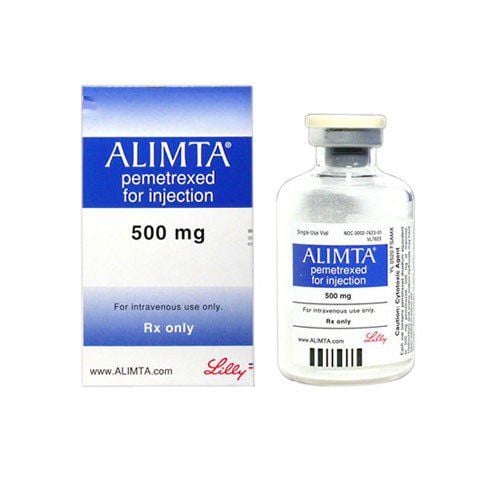This is an automatically translated article.
Ovarian cancer often goes undetected until the cancer has spread in the pelvis and abdomen. At this late stage, ovarian cancer is more difficult to treat. Early-stage ovarian cancer, which is confined to the ovaries, is more likely to be successfully treated.1. Why get ovarian cancer?
Scientists still don't know what causes ovarian cancer, although doctors have identified factors that can increase the risk of the disease. In general, cancer begins when a cell develops errors (mutations) in the cell's DNA.
Mutations tell the cell to grow and multiply rapidly, creating a mass of abnormal cells (tumors). Abnormal cells continue to live while healthy cells die. They can invade nearby tissues and break away from the original tumor to spread to other places in the body (metastasize).
The recent discovery about the cause of ovarian cancer is that it starts in the cells at the tail end of the fallopian tubes and not necessarily in the ovary itself. This new information could open up more research into the prevention and screening of this type of cancer.
There are many theories about the cause of ovarian cancer. One of them comes from looking at things that can change ovarian cancer risk. For example, pregnancy and taking oral contraceptives both reduce the risk of ovarian cancer. Because both of these factors decrease the number of times the ovaries release an egg (ovulate), some researchers think there may be some relationship between ovulation and the risk of developing ovarian cancer.
Also, we know that tubal ligation and hysterectomy reduce the risk of ovarian cancer. One theory is that some carcinogens can enter the body through the vagina and travel through the uterus and fallopian tubes to the ovaries. This will explain how a hysterectomy or blocked fallopian tubes affects ovarian cancer risk.
Another theory is that male hormones (androgens) can cause ovarian cancer.
Factors that can increase the risk of ovarian cancer include:
Older age. Ovarian cancer can occur at any age, but is most common in women between the ages of 50 and 60. Inheritance of genetic mutations. A small percentage of ovarian cancers are caused by genetic mutations that you inherit from your parents. The genes that increase the risk of ovarian cancer are called breast cancer gene 1 (BRCA1) and breast cancer gene 2 (BRCA2). These genes also increase the risk of breast cancer. Other gene mutations, including those associated with Lynch syndrome, are known to increase the risk of ovarian cancer. Family history of ovarian cancer. People who have two or more relatives with ovarian cancer have a higher risk of developing the disease than the general population. Estrogen hormone replacement therapy, especially when used long-term and in high doses. The age at which menstruation begins and ends. Starting periods too young or starting menopause at an older age, or both, can increase the risk of ovarian cancer.
2. How is ovarian cancer inherited?
Researchers have made great progress in understanding how certain mutations (changes) in DNA can cause normal cells to become cancerous. DNA carries the instructions for almost everything our cells do. We often resemble our parents because they are the source of our DNA. However, DNA influences more than how we see outside.
Some genes (part of our DNA) contain instructions to control when cells grow and divide. Mutations in these genes can lead to the development of cancer.

Chúng ta thường giống bố mẹ của mình vì họ là nguồn gốc của ADN của chúng ta
2.1 Inheritance of genetic mutations
A small percentage of ovarian cancers occur in women with genetic mutations that increase the risk of ovarian cancer. These include mutations in the BRCA1 and BRCA2 genes, as well as genes associated with other familial cancer syndromes associated with an increased risk of ovarian cancer, such as PTEN (PTEN hamartoma tumor syndrome). ), STK11 (Peutz-Jeghers syndrome), MUTYH (MUTYH gene-associated polyposis and multiple genes that can cause hereditary non-colon cancer (MLH1, MLH3, MSH2, MSH6, TGFBR2, PMS1 and PMS2)).
In hereditary ovarian cancer, genetic mutations/changes are often passed down through generations in a family. These changes, classified as germline mutations, are present in all cells of the body. In people with germline mutations, other genetic and somatic changes, along with environmental and lifestyle factors, also affect ovarian cancer.
Gene mutations are associated with more than one-fifth of ovarian cancer cases. Between 65 and 85% of these mutations are in the BRCA1 or BRCA2 gene. These gene mutations are described as "high penetrance" because they are associated with a higher risk of developing ovarian cancer, breast cancer, and certain other types of cancer in women. Compared with the 1.6% lifetime risk of developing ovarian cancer in women in the general population, the lifetime risk in women with a BRCA1 gene mutation is 40 to 60%, and the lifetime risk in women with a BRCA1 mutation. Females with BRCA2 mutations are 20 to 35%. Men with mutations in these genes also have an increased risk of developing some forms of cancer. The proteins made from the BRCA1 and BRCA2 genes are tumor suppressors involved in the repair of damaged DNA, helping to maintain the stability of the cell's genetic information. Mutations in these genes impair DNA's ability to repair, allowing potentially harmful mutations to persist in the DNA. When these defects build up, they can trigger cells to grow and divide without control or command to form tumors.
A significantly increased risk of ovarian cancer is also characteristic of a number of rare genetic syndromes, including a disorder called Lynch syndrome. Lynch syndrome is often associated with mutations in the MLH1 or MSH2 genes and accounts for 10 to 15% of cases of hereditary ovarian cancer. Other rare genetic syndromes may also be associated with an increased risk of ovarian cancer. Proteins made from genes involved in these syndromes act as tumor suppressors. Mutations in any of these genes can allow cells to grow and divide unchecked, leading to the development of cancerous tumors.
Like BRCA1 and BRCA2, these genes are considered "highly penetrable" because mutations greatly increase a person's chance of developing cancer. In addition to ovarian cancer, mutations in these genes increase the risk of several other types of cancer in both men and women.
Germline mutations in dozens of other genes have been studied as possible risk factors for ovarian cancer. These genes are described as "low penetrance" or "moderate penetrance" because changes in each of these genes appear to contribute only a small or moderate part to the overall risk of ovarian cancer. Some of these genes provide instructions for making proteins that interact with proteins made from the BRCA1 or BRCA2 genes.
Other genes affect ovarian cancer risk through different pathways. The researchers suspect that the synergistic effects of variations in these genes could significantly impact a person's risk of developing ovarian cancer.
In many families, the genetic changes associated with hereditary ovarian cancer are unknown. Identifying additional genetic risk factors for ovarian cancer is an active area of medical research.
Genetic tests can detect mutations associated with these genetic syndromes. If you have a family history of cancers associated with the syndromes listed above, such as breast and ovarian cancer, thyroid and ovarian cancer, and/or colorectal and endometrial cancer utero, you should consult your doctor about genetic testing and counseling.
The American Cancer Society recommends discussing genetic testing with a cancer genetics specialist before any genetic testing is done.

Trong nhiều gia đình, những thay đổi di truyền liên quan đến ung thư buồng trứng di truyền là không rõ
2.2 Acquired genetic changes
Most of the mutations associated with ovarian cancer are not inherited but instead occur during a woman's life and are called acquired mutations. In some cancers, the types of mutations that lead to cancer development may be the result of radiation or cancer-causing chemicals, but there is no evidence these causes ovarian cancer.
To date, studies have not been able to specifically conclude that any chemical in the environment or in our diet with mutations causes ovarian cancer. The cause of most acquired mutations remains unknown.
Most ovarian cancers have some acquired mutation. Research has suggested that tests to identify acquired mutations in ovarian cancer, such as the TP53 tumor suppressor gene or the HER2 oncogene, could help predict prognosis. The role of these tests remains uncertain and further research is needed.
To proactively protect themselves as well as prevent disease, Vinmec offers customers an ovarian cancer screening package including:
Clinical examination to detect increased risk factors for ovarian cancer, develop show clinical signs of ovarian cancer, detect suspected lesions in the pelvis, ovaries Transvaginal ultrasound helps to evaluate images of the uterus, ovaries, pelvis, detect cyst, abnormal mass of the ovary CA-125 is a cancer marquer, which is elevated in the case of ovarian carcinoma. If the probes are abnormal, the positive diagnostic value is up to 23.5%. Additional investigations such as MRI, PET-CT or diagnostic endoscopy may be needed to diagnose cancer.
Please dial HOTLINE for more information or register for an appointment HERE. Download MyVinmec app to make appointments faster and to manage your bookings easily.
References source: iconcancercentre.sg, cancer.org, medlineplus.gov












